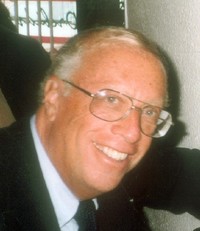By Rabbi Dr. Israel Drazin

BOCA RATON, Florida — Haim Jachter, the rabbi of a Sephardic synagogue for more than 20 years who is of Ashkenazic descent and trained in Ashkenazic yeshivot, tells readers about more than 100 differences in the religious practices between Ashkenazim and Sephardim. Ashkenazim are Jews of eastern European descent. Sephardic Jews are from lands around the Mediterranean Sea, Spain, Portugal, the Middle East, and northern Africa. They are estimated to be about 20 percent of the Jewish people.
Rabbi Jachter describes many but not all Sephardic practices and tells us how frequently some Sephardic rabbis do not perform the acts as other Sephardim because of historical circumstances. This non-conformity occurs also among Ashkenazi rabbis. His 2021 book is entitled Bridging Traditions: Demystifying Differences Between Sephardic and Ashkenazic Jews. He tells us that, “The goal of Bridging Traditions is to broaden every Jew’s perception of ‘we’ to include all Jews.” We should “take special pride” in our sub-group. “At the same time, however, every Jew should also feel a sense of oneness and unity with all Jews.”
Among the many differences that he discusses, he tells us that the traditional pronunciation of Hebrew is dissimilar. As a result, Sephardim pronounce the word for God as Ado-Nai and Ashkenazim as Ado-Noi. Sephardic Jews count a youngster from age six toward the ten men needed for saying certain prayers as long as the child recognizes God and can recite the prayer after meals. Ashkenazim usually do not count a child among the men to reach the number ten, although some Ashkenazim do so if the child is holding a Bible. Most Ashkenazi men do not wear the tallit (prayer shawl) until marriage, Sephardim begin wearing it when they reach age 13, the age of bar mitzvah. In Sephardic synagogues, the prayer leader reads every word of every prayer aloud which has a major impact on the listeners’ feelings; in Ashkenazi services the prayer leader only recites the final sentence aloud, although the prayer leader repeats the entire Amida aloud.
In some Ashkenazi synagogues Jews follow the practice of Rabbi J. B. Soloveitchik and stand while the Torah is read; Sephardim do not do so. Sephardim sit for almost all Kaddishim, whereas, the Ashkenazi custom is to stand. Many Sephardic communities only use water halla (bread), and not egg halla, for the blessing over the two breads on Shabbat; a practice ignored by Ashkenazim. Sephardic circumcisions are more joyous than those of Ashkenazim and the prayer said on joyous occasions, Shehehiyanu, is recited, but not among Ashkenazim. Sephardim reheat cold food from a refrigerator on Shabbat; Ashkenazim feel this is prohibited. In contrast, Sephardim prohibit adding hot water to drying up cholent to rescue the beloved Shabbat delicacy placed on a stove on Friday before Shabbat to be eaten at the noon Shabbat meal; Ashkenazim allow and even encourage it. Sephardic rabbis prohibit clapping on Shabbat, not so Ashkenazim.

Rabbi Jachter informs us of the origin of the Sephardic customs and why they began. Thus, for example, he clarifies why Ashkenazi Jews do not eat kitniyot (legumes) including rice and corn on Passover, while Sephardic Jews eat them. He also tells us the diverse practices among Jews regarding the use of various kinds of glass utensils for use during the year as well as Passover and for both milk and meat products, the twelve significant dissimilarities between the two groups regarding mourning, the stricter Sephardic approach to gambling, and why some, but not all, Sephardim do not eat bagels with cream cheese and lox.
These samples are just a few of the more than 100 contrasts that Rabbi Jachter discusess. His book is very comprehensive and very enlightening. But the distinctions between Ashkenazim and Sephardim are not the only thing the rabbi discusses. He devotes chapters to inform us, for example, of Rav Ovadia Yosef’s ruling confirming the status of Ethiopian Jews as Jews, the Rabbinical Council of America Prenuptial Agreement for Sephardic Jews, why are all eastern Jews referred to as Sephardic a noun that refers to Spain, how are Moroccan Jews distinct, the four special elements of Yemenite practice including their unique pronunciation of Hebrew, a sketch of Yemenite halachic history, the distinction of the Yemenite Sefer Torah, why are there so many differences between the groups, will they continue in messianic times, and interesting bios of the leading Sephardic rabbis.
Rabbi Jachter introduces his book by stating that his goal is to help readers “grasp the basis for the practices of the various sections of our Jewish community…and proclaim, ‘How interesting!’”
He succeeds in his goal.
*
Rabbi Dr. Israel Drazin is a retired brigadier general in the U.S. Army chaplain’s corps and the author of more than 50 books.
I’d like to see such a book authored by a Sephardic Jew. As far as I’m concerned, Sephardic Jews are not a “sub group” as the author indicates, but rather the dominant group until the massive conversion of a central European group to Judaism in the eighth century. Please do not tell us how to pronounce Hebrew. The distortion in the Ashkenazic pronunciation is an affliction.